

Following the Shanghai Museum's "From Botticelli to Van Gogh: Collection Exhibition of the British National Gallery" and Shanghai Powerlong Art Museum's "400 Years of Western Figure Painting: Tokyo Fuji Art Museum Collection Exhibition", another special exhibition of western classic paintings in Shanghai Coming soon.
Immediately following the above two exhibitions is the special exhibition "Botticelli and the Renaissance" from the Uffizi Gallery, which is a real Botticelli-themed exhibition and will be held at Shanghai Dongyi Art Museum The museum exhibits to the outside world. On April 21, the collection from the Uffizi Gallery was transported to the gallery, and the special exhibition also entered the exhibition stage. "The Paper Art Review" witnessed several works such as "The Pilgrimage of the Magi", "The Goddess Pallas Athena and the Centaur", "The Virgin, the Son and St. John the Baptist" waiting to be put on the wall after opening the box paintings.
The Uffizi Gallery in Italy is the birthplace of Western modern museums, the art treasure house of the Renaissance, and the palace of European classical art. The "Botticelli Hall" in the Uffizi Gallery is one of the most famous exhibition halls, which makes people linger and forget to return.
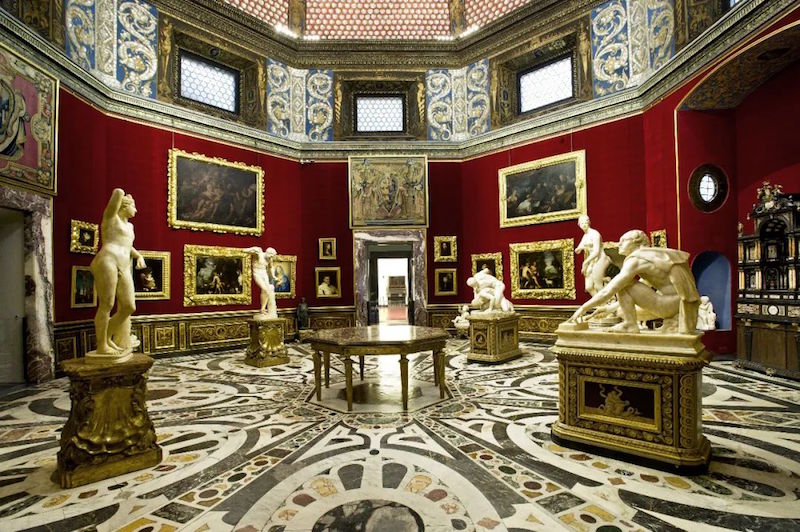
Uffizi Gallery, Italy
From 2022, Shanghai Dongyi Art Museum and the Uffizi Museum of Art in Italy have signed a cooperation plan of "ten exhibitions in five years". Ticelli Theme Exhibition". The reporter learned that "Botticelli and the Renaissance" will include "The Pilgrimage of the Magi", "The Goddess Pallas Athena and the Centaur", "Portrait of a Young Woman "Simonetta Vespucci"", "Dayne Portrait of a Young Man in a Hat" and ten Botticelli works, as well as nearly 30 works by Filippino Lippi, Perugino, Lorenzo di Creti, Cosimo Rosselli, etc. Works of Renaissance artists.
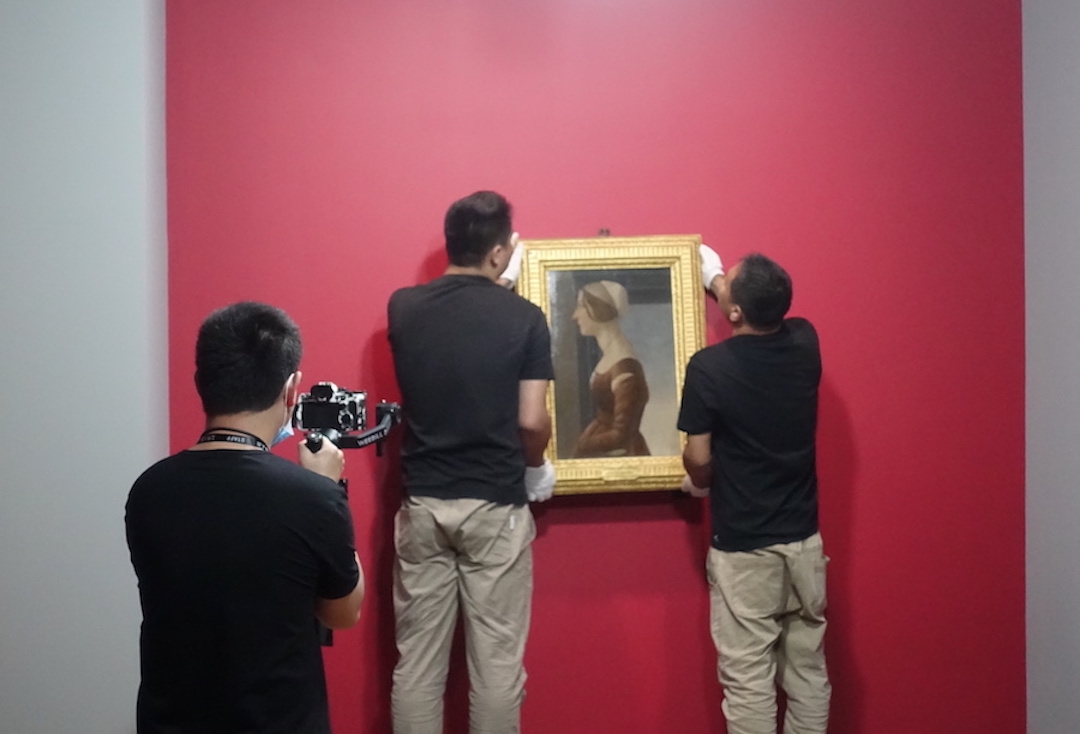
Exhibition site
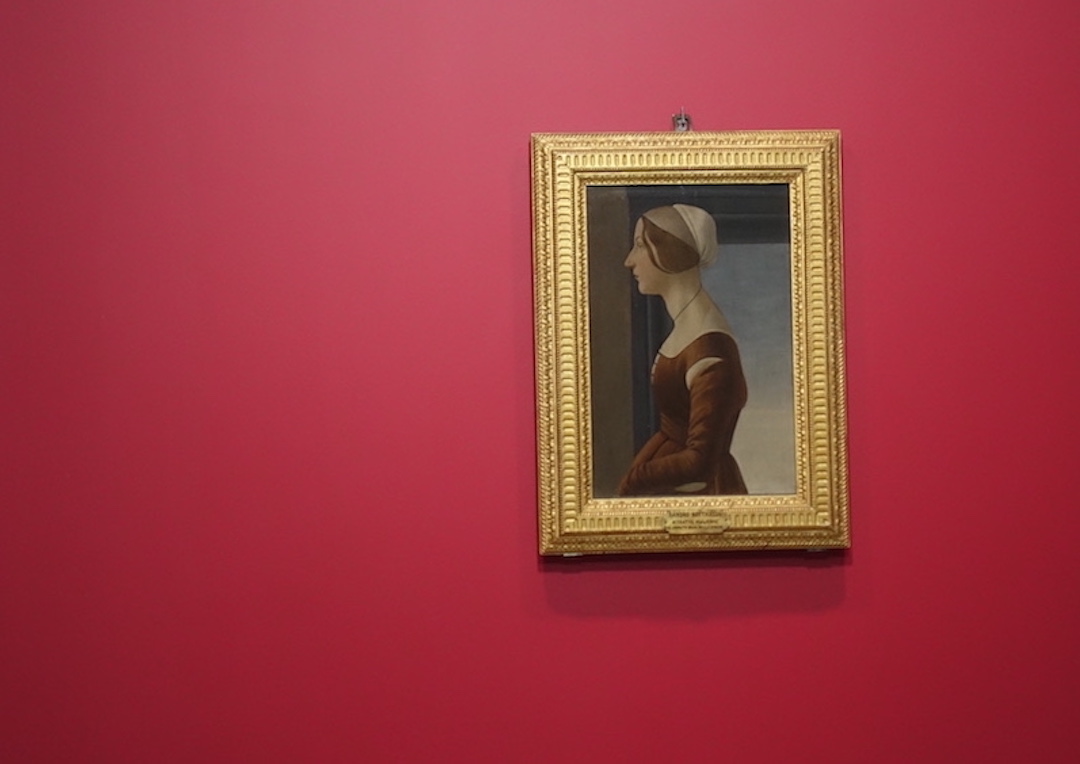
"Portrait of a Young Woman "Simoneta Vespucci"" on the wall
One week before the opening of the exhibition, 48 exhibits have been transported across the ocean from Italy to Shanghai Dongyi Art Museum. On the afternoon of April 21, Tiziana D'Angelo, Consul General of Italy in Shanghai, Rocco Carlo Genchi, Deputy Consul General of Italy in Shanghai, Francesco D'Arelli, Director of the Cultural Office of Consulate General of Italy in Shanghai ), curator Daniela Parenti, Uffizi Gallery restorer Flavia Puoti, and Dongyi Art Museum executive director Xie Dingwei jointly supervised and witnessed Next, the unpacking of the exhibits is completed.
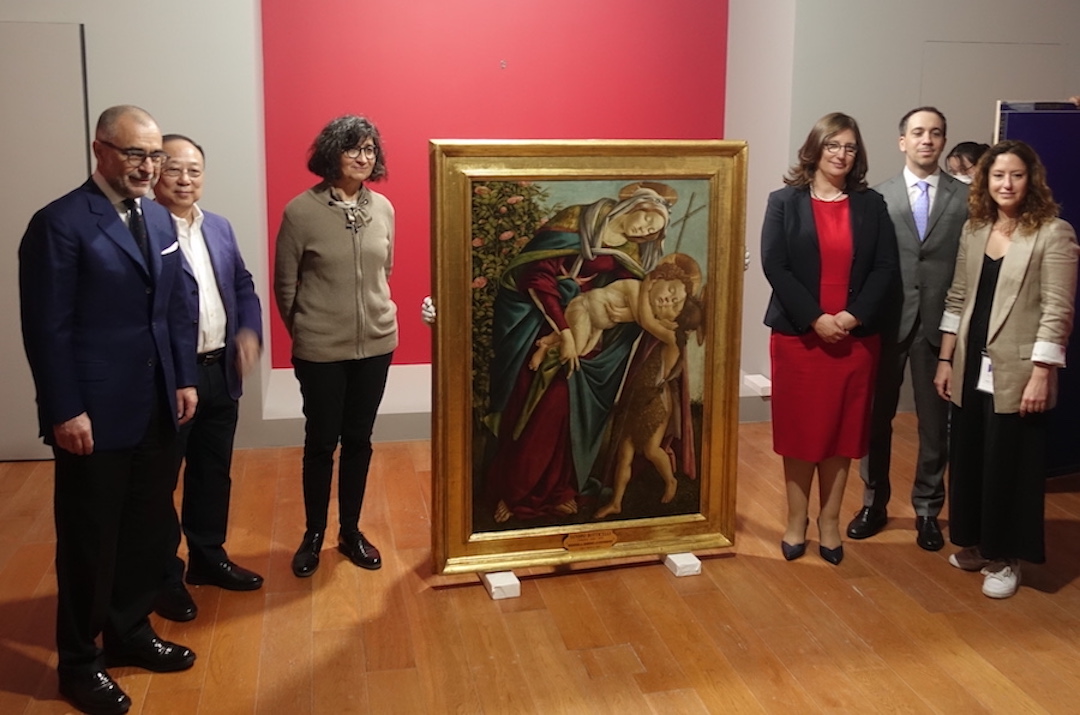
Exhibits unpacking and layout
The reporter saw at the scene that the works on display that day included Botticelli's "Madonna, Son and St. John the Baptist", "Pilgrimage of the Magi", "Goddess Pallas Athena and the Centaur", "Young Woman". "Portrait of Simonetta Vespucci" and other paintings. After unpacking, these works will complete the installation work on the wall.
Sandro Botticelli, an artist of the Florentine School in the early Italian Renaissance, was one of the most outstanding interpreters of the entire Renaissance. Botticelli, who became famous at a young age, was independent and creative. He was in the wave of the Renaissance era, but he did not follow the mainstream painting aesthetics and insisted on making fireworks with different colors. His paintings are delicate and expressive, often depicting the subtle expressions of each character in detail, so that readers can perceive their rich emotions. The most intuitive embodiment of Botticelli's artistic achievements is his elegant and beautiful painting style, gorgeous and beautiful colors, and smooth and smooth lines. This style has had a profound impact on generations of artists. His classic works have a timeless charm, and the shocking beauty still hits us after several centuries.
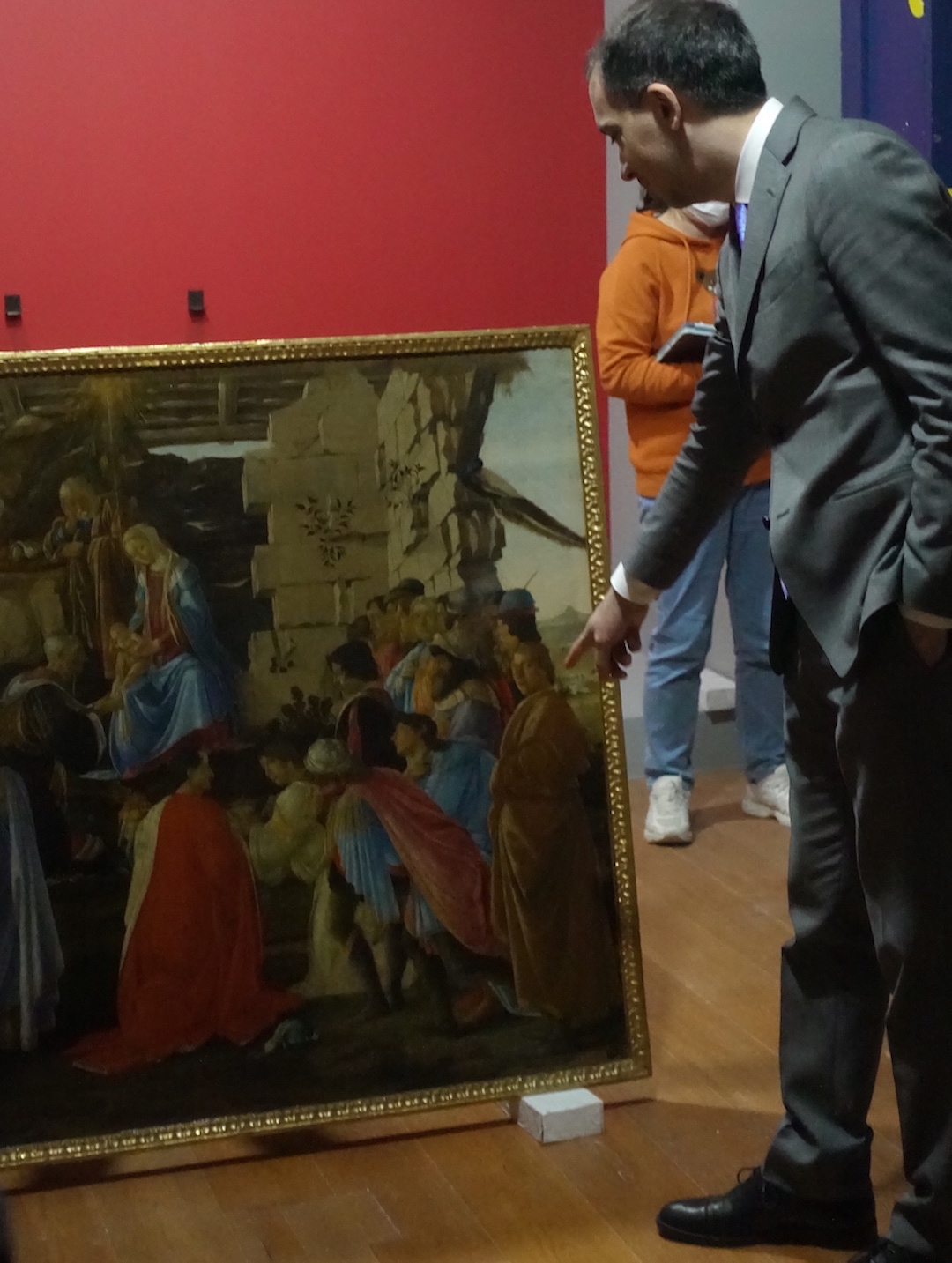
Rocco Carlo Genchi, Deputy Consul General of Italy in Shanghai, looks at the portrait of Botticelli in the painting

Sandro Botticelli, The Pilgrimage of the Magi 1474-1475, tempera on wood panel 111 x 134cm, ©Photographic Department, The Uffizi Galleries - By Permission of the Ministry for Culture of Italy
One of the most anticipated blockbuster exhibits in the upcoming exhibition is Botticelli's masterpiece "The Pilgrimage of the Magi", which is one of Botticelli's most successful religious paintings and was created earlier than other works. The two masterpieces "Spring" and "The Birth of Venus" are regarded as a mirror of Florentine society when the Medici family was in power.
The picture of "The Pilgrimage of the Three Magi" depicts the story of the three magi worshiping the Son Jesus. The Son sitting on the lap of the Virgin Mary is in the center of the picture. His hut stands on the ruins of the building that symbolizes the collapse of the pagan world. In fact, most of the people who come to worship are dressed as members of the Medici family. Interestingly, Botticelli included his self-portraits next to numerous well-known figures.
Regarding the significance of this painting, Xie Dingwei told The Paper reporter, "The special feature of this painting is that people infer that the person on the right side of the picture is Botticelli himself, and this is the only portrait left by Botticelli. In this regard, curator Daniela Parenti told reporters, "In the early Renaissance, artists only painted portraits for commissioners (or very important people), and at that time painters generally believed that they were not important, so I won’t paint my own image.”
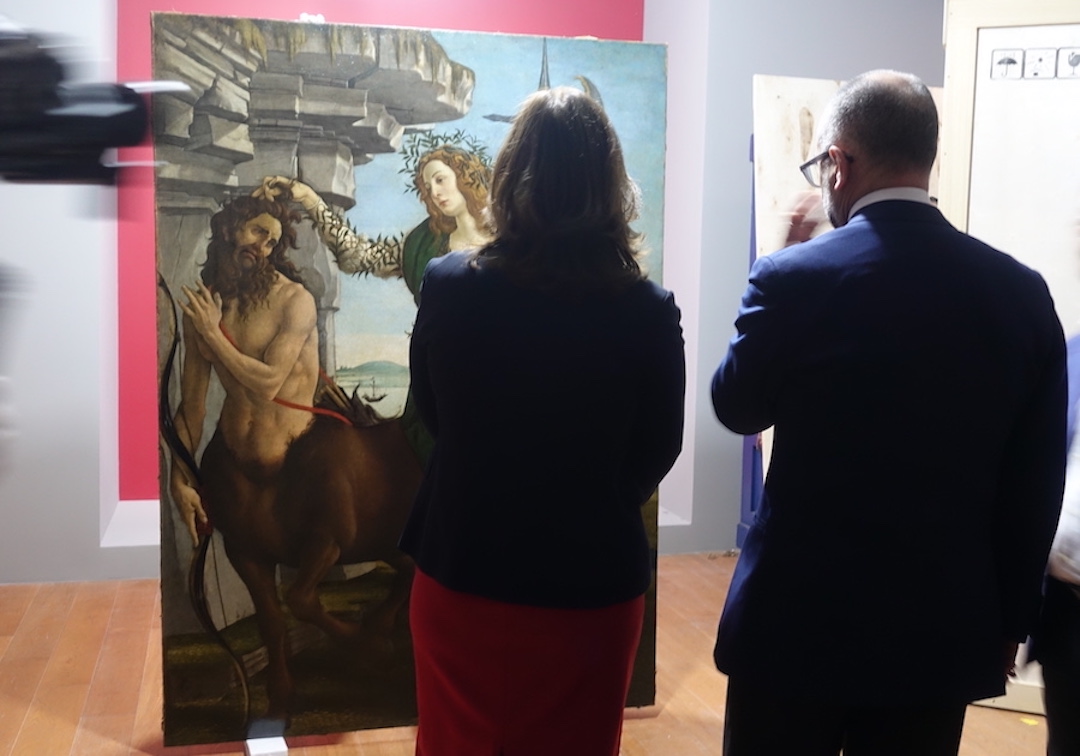
Exhibition site
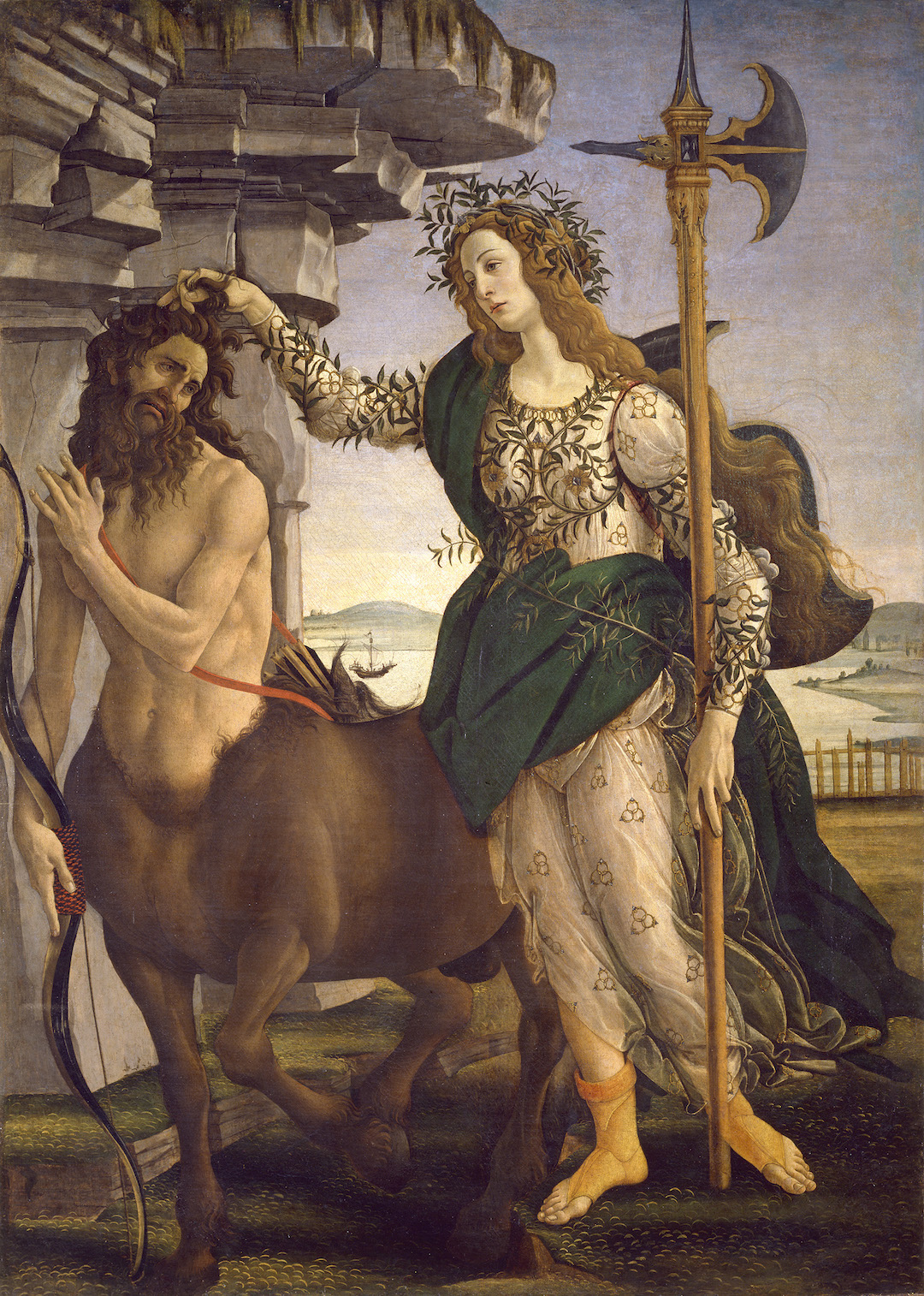
Sandro Botticelli, The Goddess Pallas Athena and the Centaur, 1480-1485, tempera on canvas 207 x 148 cm, © Photographic Department, The Uffizi Galleries - By Permission of the Ministry for Culture ofItaly
In addition, another work by Botticelli, "The Goddess Pallas Athena and the Centaur" cannot be ignored. The Renaissance is an era of gradual self-evident innovation. Religious and mythological themes are often used to describe the creator or client's cognition and understanding of real life, and to convey his personal views and attitudes towards the world and life. As the first artist in medieval Europe to use mythology as the subject of his paintings, Botticelli's unique painting style provided a reference for future generations of painters to open up a more free and broad creative space.

Sandro Botticelli, Madonna, Child and St John the Baptist, circa 1495-1500, tempera on wood panel 134x 92cm, ©Photographic Department, The Uffizi Galleries -By Permission of the Ministry for Culture of Italy
This work depicts the meeting of the Son Jesus and his cousin St John the Baptist. St. John was a revered saint, the patron saint of Florence, and the quintessential saint. From the 1490s, Botticelli gradually adopted a simple style of painting, deliberately ignoring the correct rules to express space and human anatomy, and instead focused on presenting the information spontaneously conveyed by the icon. Many painters have copied this "Madonna, Child and St. John the Baptist", which shows its importance.
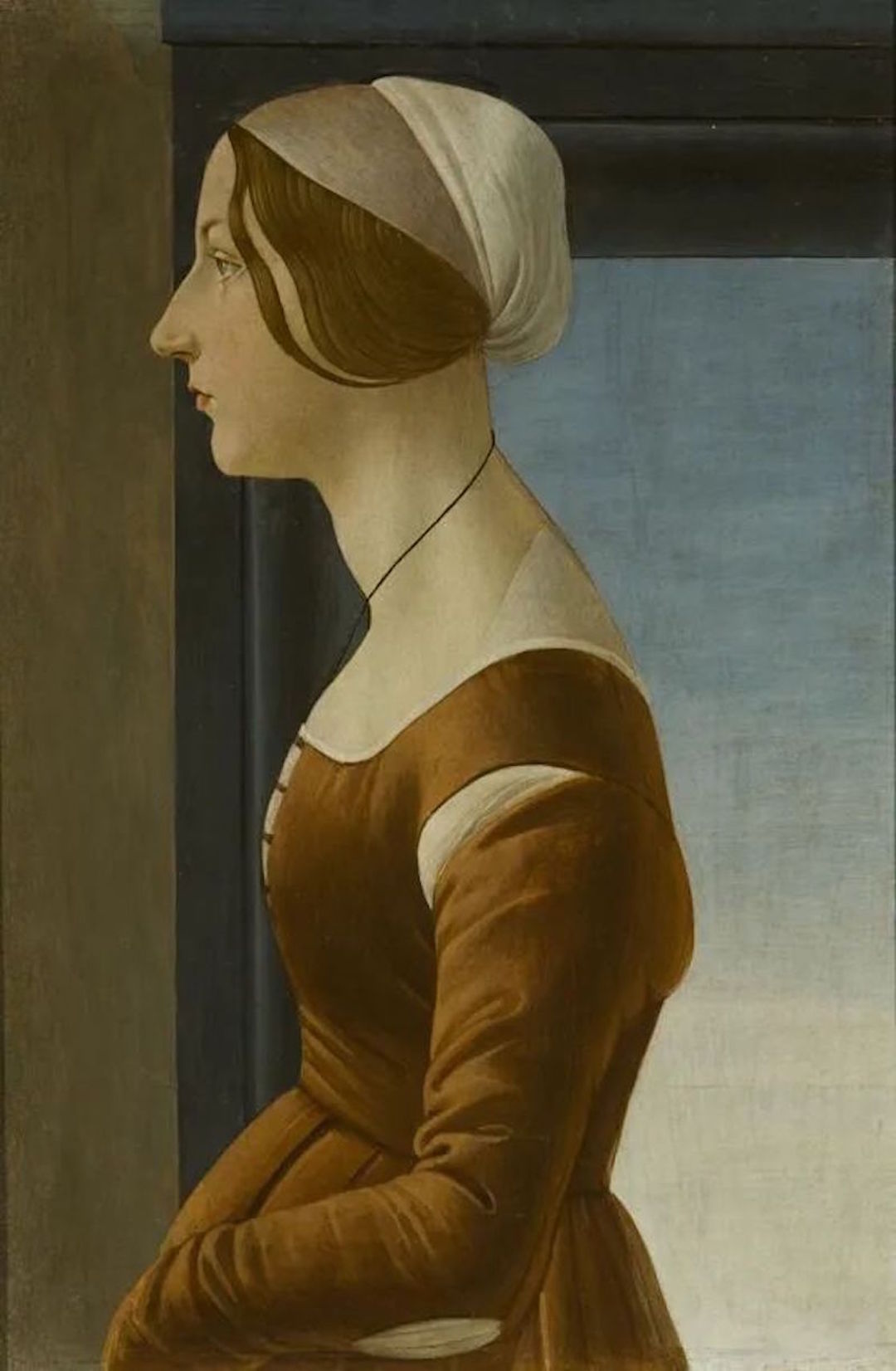
Sandro Botticelli, Portrait of a Young Woman "Simonetta Vespucci", 1480-1485, tempera on wood panel 61.3 x 40.5 cm, © Photographic Department, The Uffizi Galleries -By Permission of the Ministry for Culture of Italy
The profile is the most common way of depicting portraits of women from the beginning of the 15th century to the middle and second half of the 15th century. The woman in the painting is shown in profile. Gao Long's nose is very conspicuous, her hair is gathered in a simple white cap, and she is wearing a dark red tunic called "Gamura". The plain clothes may be to show femininity moral quality. The painting became one of Botticelli's most famous portraits.
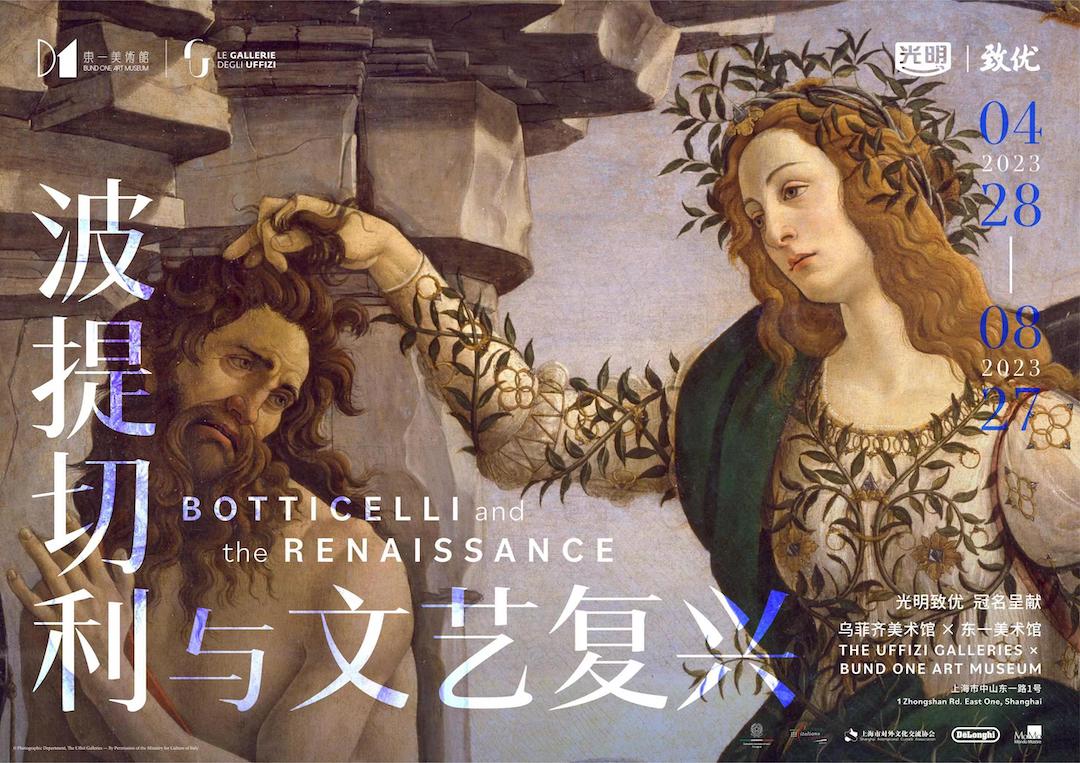
exhibition poster
The exhibition "Botticelli and the Renaissance" will be on display from April 28 to August 27, 2023.